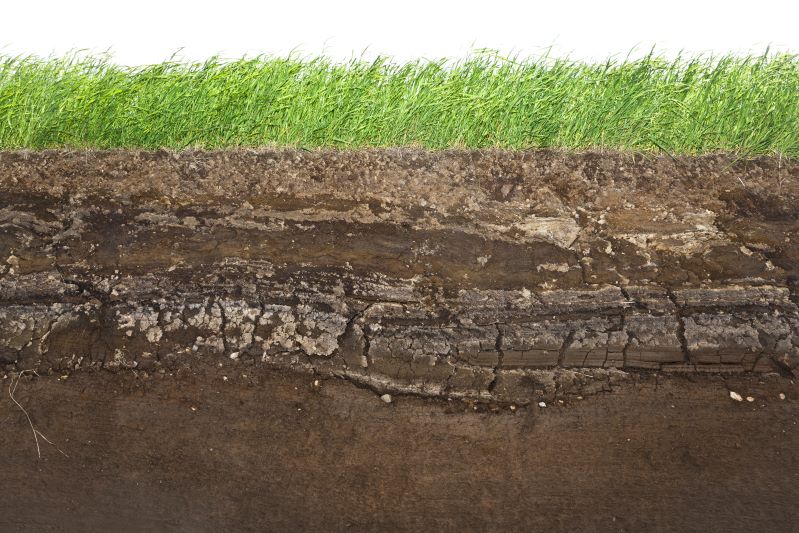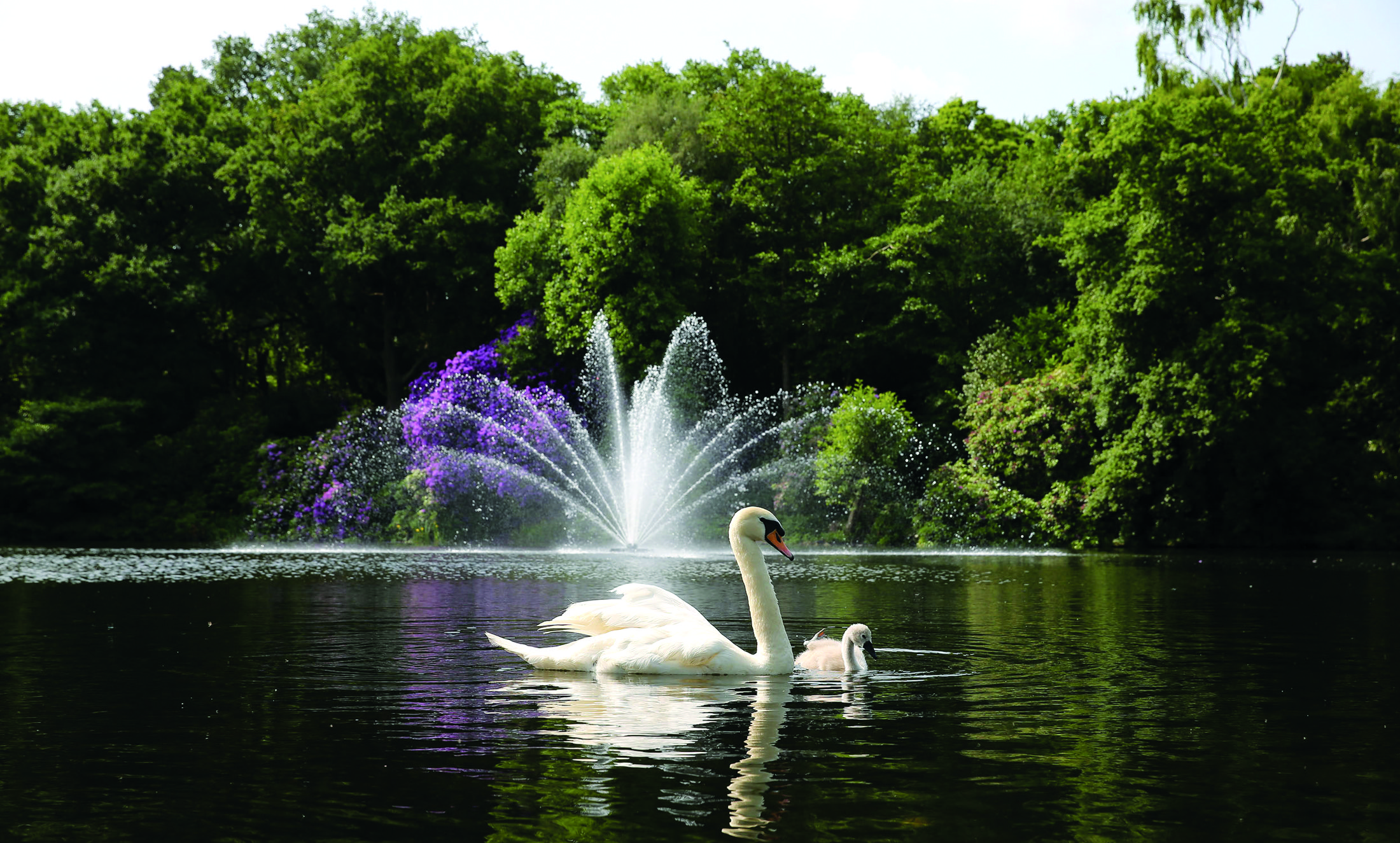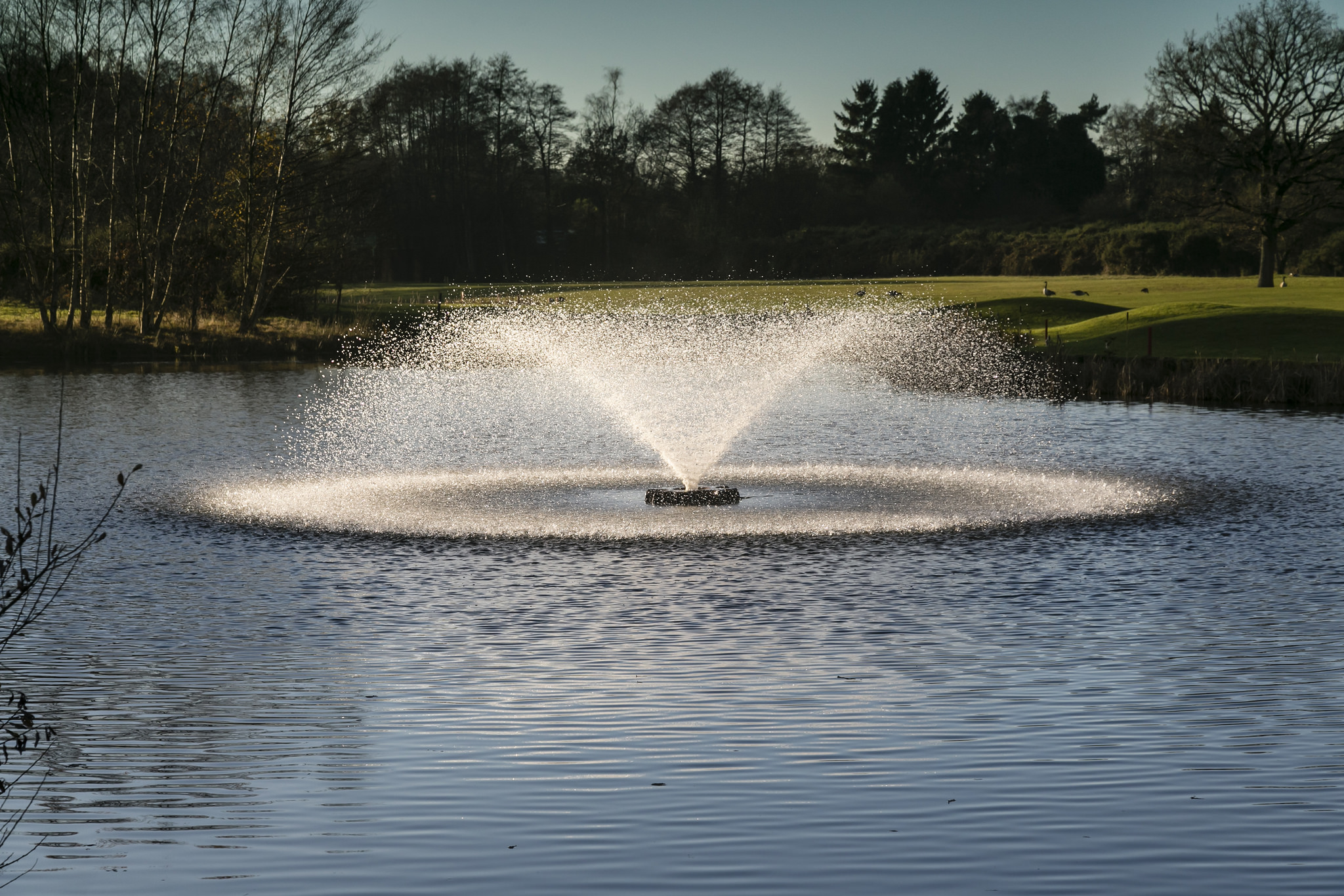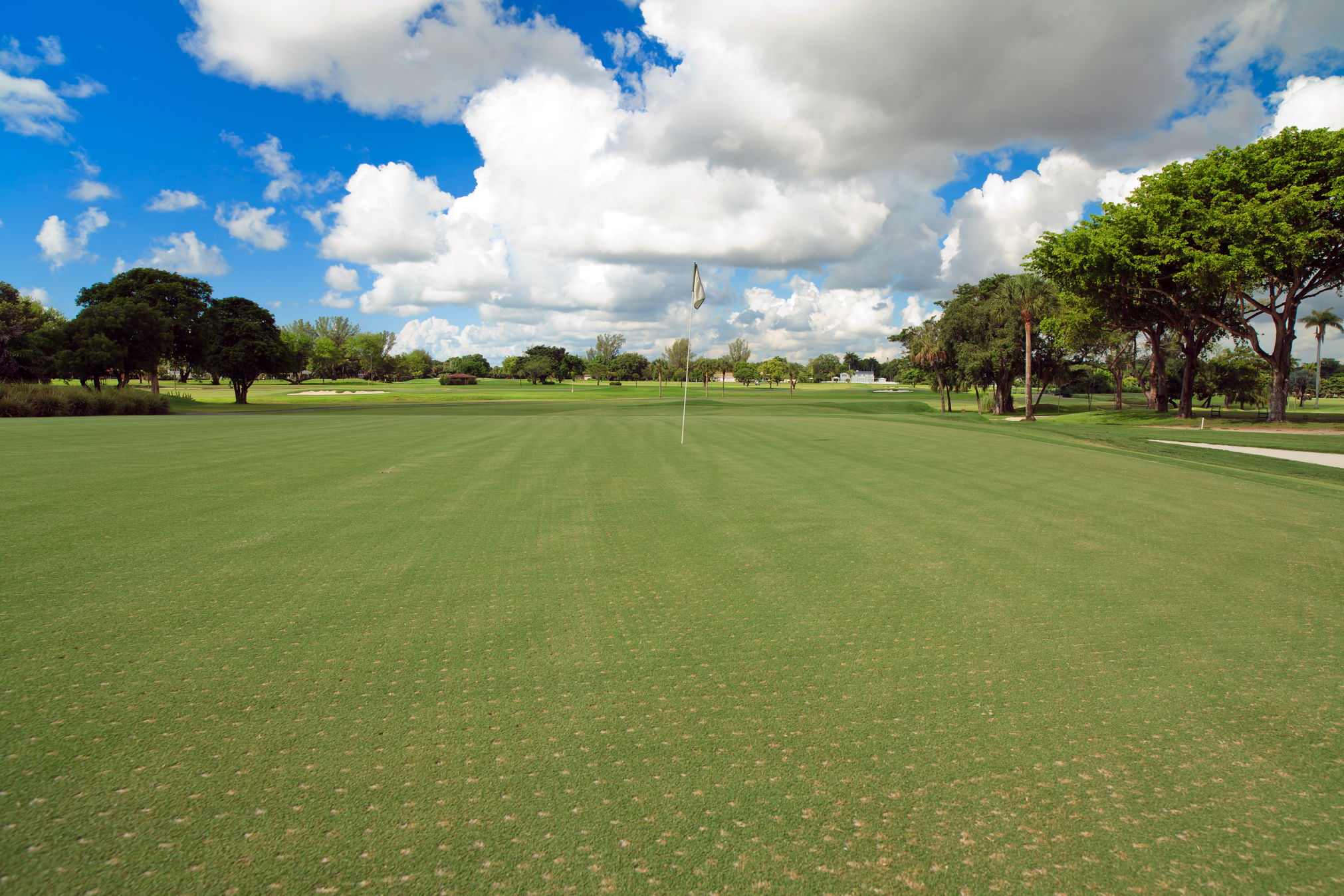- CONTACT US
- MOWERS
- VEHICLES
- APPLICATION
- Golf
- AERATORS
- VEHICLES
Rainwater harvesting for sustainable water sourcing
CONTENTS
FEATURED STORIES

Reesink Turfcare
Reading time: 10 minutes
Inside Water harvesting
In the spring we discussed responsible irrigation and touched on water harvesting. But now with pressure ever increasing on leisure turf irrigation to reduce mains use, we thought it timely to delve into the subject.
Sustainable water sourcing
Sustainable water sourcing is now a recognisable term and a key theme in the GC2030 Water Security portal. It relates to future water reliance being self-sufficient and how all water on a golf course should be treated as a resource and an opportunity, with the main aim for all UK golf courses to be reducing, and even removing themselves from mains water for irrigation.

What is rainwater harvesting?
The Environment Agency describes water harvesting as the rainwater collected from roofs and other above ground surfaces via a system of above ground pipes and tanks that are isolated from inland waters or groundwater.
Are there restrictions for use?
Rainwater harvesting within a catchment must not affect the normal watercourse flow. The Environment Agency will not regulate harvested rainwater provided its use does not harm the environment either alone or combined with other abstractions or transfers.

Do you need a licence to use harvested water?
You do not need a water abstraction licence:
• To harvest rainwater into a reservoir, with or without an overflow, if it only contains collected rainwater
• To use harvested rainwater that has not entered inland surface waters or groundwater
• If the rainwater storage system is used for irrigation and is not a source of water supply
• To use water stored for irrigation in a reservoir with an overflow provided the reservoir is only filled by harvested rainwater or water abstracted from another source under a full abstraction licence.
You will need a water abstraction licence if you combine harvested rainwater with water from any watercourse or land drainage into a reservoir storage system that discharges to inland waters. More information on how to apply for a water abstraction or impounding licence, types of water resources licence, help with your application and charges can be found by searching Apply for a water abstraction or impounding licence at GOV.UK
Types of water collection
There are a few ways to harvest water: from on or offsite or from a borehole or watercourse abstraction and there are examples of golf clubs around the UK optimising each for their irrigation requirements to great success on The R&A Golf Course 2030 Water website.
The main points to consider about onsite water collection is that it covers a range of options from individual buildings, car parks, localised drainage collection or full-scale landscape water collection and requires large scale water storage ability to harvest water during wet periods. Storage options range from localised above ground tanks, larger below ground tanks, individual ponds, integrated network of ponds around a course and larger reservoirs.
Water harvesting offsite takes water from surrounding land users (agriculture, horticulture, highways and housing) and from other sources (streams or rivers, ditches, wastewater discharge and surface run-off from fields or roads). This water will need dedicated expert input and liaison with local councils, water authorities, surrounding landowners, developers and Government Agencies.
Onsite boreholes can produce significant quantities of water and anything above 20 m³ a day will require an abstraction licence from the Environment Agency.
Watercourse abstraction, depending on local environmental conditions and restrictions, can be abstracted from local watercourses and has the same license requirements as using a borehole.
Where to start
The easiest option for small scale water harvesting is to harvest off existing buildings onsite, and locally store the water in large containers. Small-scale storage is a low cost and easy solution to implement. To increase the volume collected, rainwater can be harvested from roofs, car parks and other hard standing areas and stored in larger tanks or moved to a site-wide storage system.
However, if you want enough water for irrigation use, we need to talk about reservoirs...
Reservoirs
Reservoirs can be used to store water for use with an irrigation system and/or to control run-off discharging from a site. They can house water from single or multiple sources such as a borehole abstraction, river abstraction, potable mains supply and/or rainwater harvesting system and range in size from 5,000-25,000m3.
Currently, anything over 25,000 m3 must be notified and registered with the Environment Agency. The design of a reservoir will be dependent on-site conditions, geology, water table, water storage requirements and potential localised restrictions.
For irrigating golf courses or pitches, a reservoir is key to harvesting rainwater especially as there will be excessive rainwater in winter months which needs storing until it can be used in the spring and summer.

Even the wildlife approves of how clean Otterbine keeps the water at Frilford Heath.
Making water irrigation ready
There’s no point having all this carefully collected water if it’s not good enough to use and while generally, water collected via the run-off method mentioned will be relatively clean, there can be pollutants and run-off nitrates especially if the water originates from farming land.
The quality of the input water is the single most important factor that influences the quality of the reservoir water, and this can sometimes be difficult to control, so some treatment to make it irrigation ready may be necessary. One of the easiest, most environmentally friendly and cost-effective ways to do this is to install equipment to aerate the water by pumping a fine streams of air bubbles through it. This is where products such as those made by Otterbine step in.

Ripples in the reservoir. Otterbine Air Flo 3 aerator in Frilford Heath’s reservoir.
Key parameters to test water quality include:
• pH
• dissolved metals
• nutrient content
• Electrical Conductivity (EC)
• Biological Oxygen Demand (BOD)
• Total Suspended Solids (TSS)
• Viral or bacterial pathogens
How to diffuse the situation with Otterbine
The motion of bubbles to the water’s surface has the capacity to move an enormous amount of water, estimated between 5000-8000 pounds per hour, within the pond, lake or reservoir. Water circulation will increase as the depth increases, so the greater depth of a pond or lake, the better the water will be mixed and aerated.
The smaller the bubble, the more effective the system. This is primarily since smaller bubbles tend to stay in the water longer, so, a greater surface area of the water is influenced by the bubbles as they spread while rising to the surface. Larger, coarser bubbles rise to the surface quicker and leave less time for the oxygen to dissolve in the water.
Fine-bubble diffused air systems are also good at deterring algae growth odour, smells and discolouration as they are aerating the water so in most cases there is no need for the additional use of chemicals or algaecides.
Otterbine in action
Frilford Heath Golf Club near Oxford has a 6m, 10-million-gallon reservoir. Under licence from the Environmental Agency, it is piping water from a brook downstream through farming fields, bringing pollutants such as waste and silt with it. As it arrives, it’s ready for a clean.
Also, at the time, the water, silt and sediment at the bottom of the reservoir was stagnant, it hadn’t seen the light of day for over 10 years and was too unhealthy to go on the turf.
The club spoke to Reesink Hydro-Scapes and chose the Otterbine Air Flo 3 aerator. This pumps air to diffusers on the lake or pond bed to release oxygen, creating mass circulation to the bottom and top water layers without affecting the water’s surface. Churning the water up from the lower levels allows the aerobic bacteria to do their work and metabolise the nutrients. Within 12 weeks, 10 years of bad water was clean enough to use on the course and the water has remained irrigation ready since it was installed in 2016.

Frilford Heath’s 6m, 10-million-gallon reservoir.
Conclusion
The Environment Agency says we don't have enough infrastructure to store water from wetter winters for the drier summers – this includes for the nation’s domestic use! With that in mind, it’s clear that all golf courses have a duty to themselves and the wider environment to ensure their water sourcing strategies are sustainable and secure for long term use.
Obviously setting up a water harvesting system takes planning and there will be a cost attached. It’s not a quick process either. The subject is vast and while this article won’t cover everything for all situations but it will hopefully have done enough to start you thinking about it.
All it is, is a new management technique. Technology brings these along regularly, what’s different about this one is that it’s driven by the environment. With that in mind there is no escaping it. Whether it’s this year or next, change in this respect must happen.
As referenced here, the GC2030 Water Security is a wonderful resource on the subject, our experienced Reesink reps are here to help too. But don’t forget, so many of your golf course colleagues are already on this journey, many like Frilford Heath are on the other side, so ask them. We don’t doubt, they’ll be happy to share their experiences, lessons learned and recommendations given.
Reesink UK LTD | 1-3 Station Road, St Neots PE19 1QF | Registered in England
Reesink UK LTD is authorised and regulated by the Financial Conduct Authority.







































































